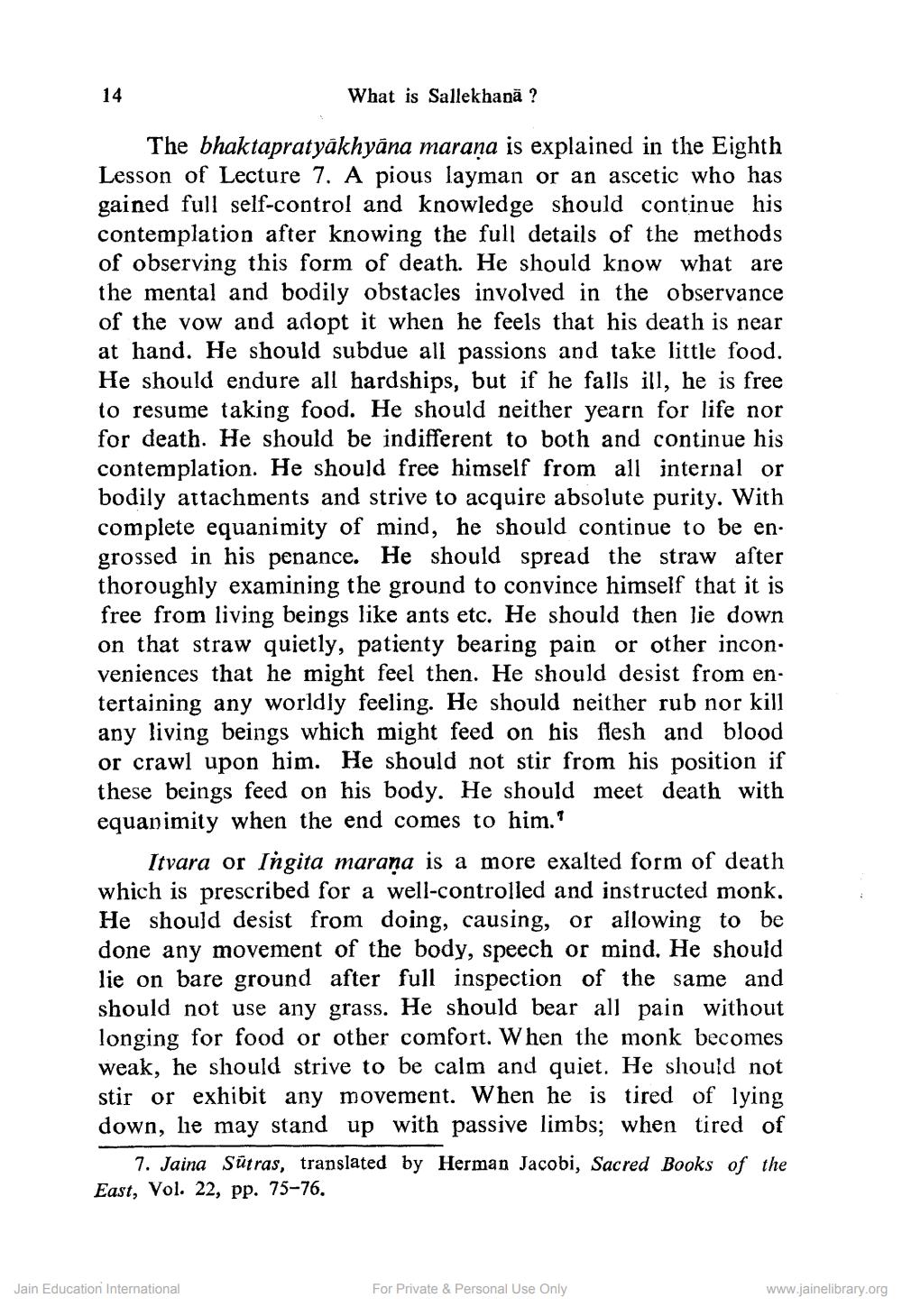________________
What is Sallekhanā ?
The bhaktapratyākhyāna marana is explained in the Eighth Lesson of Lecture 7. A pious layman or an ascetic who has gained full self-control and knowledge should continue his contemplation after knowing the full details of the methods of observing this form of death. He should know what are the mental and bodily obstacles involved in the observance of the vow and adopt it when he feels that his death is near at hand. He should subdue all passions and take little food. He should endure all hardships, but if he falls ill, he is free to resume taking food. He should neither yearn for life nor for death. He should be indifferent to both and continue his contemplation. He should free himself from all internal or bodily attachments and strive to acquire absolute purity. With complete equanimity of mind, he should continue to be en. grossed in his penance. He should spread the straw after thoroughly examining the ground to convince himself that it is free from living beings like ants etc. He should then lie down on that straw quietly, patienty bearing pain or other incon. veniences that he might feel then. He should desist from entertaining any worldly feeling. He should neither rub nor kill any living beings which might feed on his flesh and blood or crawl upon him. He should not stir from his position if these beings feed on his body. He should meet death with equanimity when the end comes to him.'
Itvara or Ingita marana is a more exalted form of death which is prescribed for a well-controlled and instructed monk. He should desist from doing, causing, or allowing to be done any movement of the body, speech or mind. He should lie on bare ground after full inspection of the same and should not use any grass. He should bear all pain without longing for food or other comfort. When the monk becomes weak, he should strive to be calm and quiet. He should not stir or exhibit any movement. When he is tired of lying down, lle may stand up with passive limbs; when tired of
7. Jaina Sūtras, translated by Herman Jacobi, Sacred Books of the East, Vol. 22, pp. 75-76.
Jain Education International
For Private & Personal Use Only
www.jainelibrary.org




